|
Academic fencing (German akademisches Fechten) or Mensur is the traditional kind of fencing practiced by some student corporations (Studentenverbindungen) in Germany, Austria, Switzerland, Latvia, Estonia, and, to a minor extent, in Flanders, Lithuania, and Poland. It is a traditional, strictly regulated épée / rapier fight between two male members of different fraternities with sharp weapons. The German technical term Mensur (from Latin, dimension) in the 16th century referred to the specified distance between each of the fencers. A form of noble duel – mensur fencing – was widespread in Germany during the 16th century among young people, particularly in the student community. (The word originated from German Mensurfechten – fencing in confined space). Duelists wore protective eyepieces with metallic netting. The chest and neck were protected by a leather chest guard and a thick scarf. They wielded prototypes of the saber – "schlagers" with sharply pointed ends. Opponents faced each other and took turns at hits, aiming for the only unprotected body part - the opponent's face. When fatigue set in or one of the opponents let down his guard, his opponent broke through his parries, leaving a cut on his face, which eventually scarred over. As we know, scars are said to give a man's face character. As a result, both duelists left satisfied: the winner with a sense of triumph, and the loser with a sign of courage on his face. Surprisingly enough, this type of fencing, which cannot be considered duel or sport fencing, endures in the student community of Germany to this day. The modern mensur fencing (also known as academic fencing) cannot be called a sport proper since it has no winners or losers. At the same time, it is not a duel since it is not used to resolve any disputes. Mensur fencing does not rule out the possibility of sustaining injuries. However, in this case inflicting injuries is not an end in itself. Neither the government nor the church has banned mensur fencing in Germany. What is more, the church sanctioned it in 1988, while the government lifted its ban in 1953, which has been in place since 1933. Walter Luyken The modern statute of mensur fencing states: "...the aim of mensur is to promote courage and self-confidence, and the return of the medieval tradition is no proof of its reactionary tendencies, but merely a tribute to the ancestors". As for the technique of handling the weapon and rules of the fight, a distinctive feature of the art of mensur fighting until the mid-19th century had been the fact that it was mobile. The distance between the opponents was such that they could hit each other only by thrusting. Each of them had the right to defend himself not with the weapon alone, but could also dodge the weapon. The duel continued until the opponents drew first blood. In 1850 new mensur fencing rules were introduced. The distance was reduced, and fencing was no longer mobile, but static. It was forbidden to retreat or dodge with the torso. Only the weapon could be used to parry the attack. Yet, like before, the bout continued until the opponents drew first blood, that is, it had characteristics of a duel designed to resolve a dispute. The weapon wielded by the fencers is called the schlager. Essentially it is a "saber", but if translated verbatim, it can be called a "hitting stick", which is also synonymous with the German term for tennis racket. The modern German word for "saber" is "sabel". The schlager is a heavy weapon, three times the weight of the modern sport saber. Schlager During the first half of the 19th century and some of the 18th century, students believed the character of a person could easily be judged by watching him fight with sharp blades under strict regulations. Academic fencing was more and more seen as a kind of personality training by showing countenance and fairness even in dangerous situations. Student corporations demanded their members fight at least one duel with sharp blades during their university time. The problem was that some peaceful students had nobody to offend them. The solution was a kind of formal insult that did not actually infringe honour, but was just seen as a challenge for fencing. The standard wording was dummer Junge (German for "young fool.") In the long term, this solution was unsatisfying. Around 1850, the Bestimmungsmensur (German bestimmen means "ascertain", "define" or "determine") was developed and introduced throughout Germany. This meant the opponents of aMensur were determined by the fencing official of their corporations. These officials were regularly vice-chairmen (Consenior) and responsible for arranging Mensur bouts in cooperation with their colleagues from other corporations. Their objective was to find opponents of equal physical and fencing capabilities to make the event challenging for both participants. That is the way it is still done today, and is the concept of the Mensur in the modern sense of the word. Mensur Göttingen 1837 In the German Schläger combat the position is the same as in back-swording, save that the left arm is kept, as in sabre play, behind the body; commonly the waistband of the trousers is grasped by the left hand. The weapon is a long, narrow blade, like a pointless rapier, but much more flexible. It is sharpened for a length of twenty centimetres (say eight inches) on the true edge, and five on the false edge. For practice and instruction blunt and rather stouter blades are used. The mask is like an English single-stick mask, but stronger and heavier. A padded leather vest, coming almost down to the knees, covers the body, and the right arm is encased in a sleeve attached to a gauntlet, which may be compared to an elongated Rugby football. In the actual duel there is an even more elaborate system of defense ; the right wrist is guarded with a ring of mail, and the arm with folds of silk, which, like the turban of the East, are enough to stop any ordinary cut. Practically, though not according to strict rule, the body is altogether covered. The eyes are protected by iron spectacles, with strong wire net instead of glasses. Fihgting position for mensur Mensur protection gear Mensur protection for eyes and nose During the times of the Third Reich, the national socialist leadership chose to forbid academic fencing. They had recognized that Mensur fencing was an integral part to the internal strength of the last still-existing independent Studentenverbindung fraternities during the later 1930s. As Nazi pressure increased and fraternities were forced to officially suspend their activities, so-called comradeships were founded. These provided means for practicing and organizing the Mensur among former fraternities while remaining undetected to the Nazi secret police. One such example was the SC-Comradeship Hermann Löns initiated by members of the Corps Hubertia Freiburg and other fraternities in Freiburg, Germany. There, fencing Mensur "duels" continued and even intensified from 1941 on, with over 100 of such duels happening during World War II in Freiburg alone. Following the war, most of the formerly suspended fraternities were reactivated and resumed the traditions of Mensur fencing, if they had not continued throughout the time of Nazi occupation. SS officer with scarves from mansur Modern academic fencing, the Mensur, is neither a duel nor a sport. It is a traditional way of training and educating character and personality; thus, in a mensur bout, there is neither winner nor loser. In contrast to sport fencing, the participants stand their ground at a fixed distance. At the beginning of the tradition, duelers wore only their normal clothing (as duels sometimes would arise spontaneously) or light-cloth armor on arm, torso, and throat. In recent years, fencers are protected by mail or padding for the body, fencing arm, fencing hand (gauntlet) and the throat, completed by steel goggles with a nose guard. In Austria and Switzerland a nose guard is uncommon. They fence at arm's length and stand more or less in one place, while attempting to hit the unprotected areas of their opponent's face and head. Flinching or dodging is not allowed, the goal being less to avoid injury than to endure it stoically. Two physicians are present (one for each opponent) to attend to injuries and stop the fight if necessary. Preparations for a mensur here between members The participants, or Paukanten, use specially developed swords. The so-called Mensurschläger (or simply Schläger), exists in two versions. The most common weapon is the Korbschläger with a basket-type guard. Some universities in the eastern part of Germany use the so-called Glockenschläger, which is equipped with a bell-shaped guard. These universities are Leipzig, Berlin, Greifswald, Dresden, Tharandt (in the Forestry College, which is now part of Technische Universität Dresden), Halle on the Saale, Frankfurt-an-der-Oder, and Freiberg. In Jena, both Korbschläger and Glockenschläger are used. Studentenverbindungen from some western cities use Glockenschläger because their tradition had its origin in one of the eastern universities but moved to West Germany after World War II. Korbschläger Glockenschläger The scar resulting from a hit is called a "smite" (German Schmiss), and was seen as a badge of honour, especially in the second half of the 19th century and the first half of the 20th. Today, it is not easy for an outsider to identify Mensur scars due to better medical treatment. Also the number of mandatory Mensuren were reduced in the second half of the 20th century. Most Mensur scars are located on the left temple of the forehead. Scars on the cheek and chin are rather uncommon today and sometimes due to accidents. Schmiss After mensur duel
4 Comments
3/1/2018 02:50:01 am
This article is really superficiel. There are historical informations which are not correct. Blessures on the left temple are normal blessures, the right temple is protected by the arm and revers mounting hits are not allowed in the Jena Convention. For correct informations get in contact with a student corporation. Or have a look on this article, which is quite better: https://www.google.ch/url?sa=t&rct=j&q=&esrc=s&source=web&cd=52&cad=rja&uact=8&ved=0ahUKEwioh9mf-MrZAhWBQBQKHexgD-o4MhAWCDUwAQ&url=http%3A%2F%2Fwww.hochbitte.be%2FPDF%2FDiekleinestudentischefechtfibel.pdf&usg=AOvVaw0HlnOPYhtYfz5XFXf4_DtQ
Reply
Leave a Reply. |
MarkoUndermaster of historical fencing ArchivesCategories
All
|

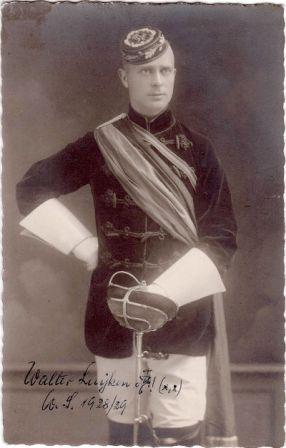

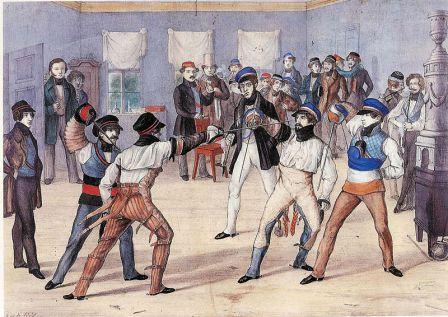
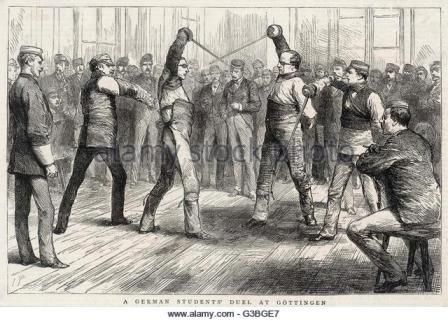
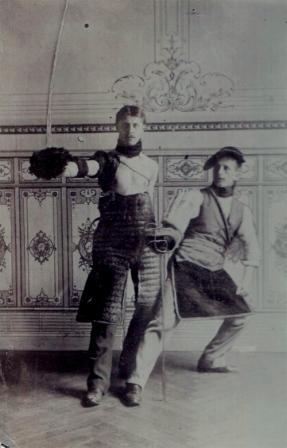


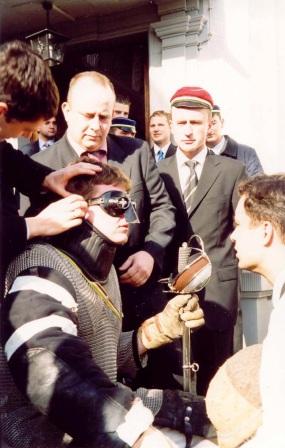

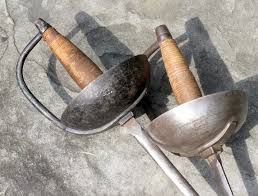

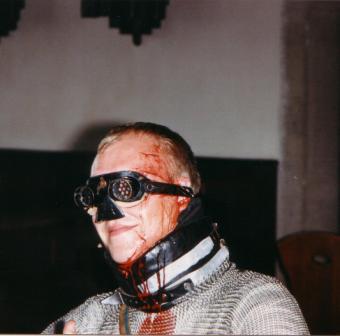
 RSS Feed
RSS Feed
